
Praise for the second edition of A History of Byzantium
I welcome this expanded second edition of Timothy Gregorys useful introduction to the growing field for Byzantine studies. It will be a great help to students and teachers, especially for its greater coverage of archaeology and its guides to web resources and primary sources in translation.
Averil Cameron, University of Oxford
Professor Gregorys deep knowledge of archaeology, historical geography, and the original Greek sources infuses his lucid history of Byzantium with insights into the unexpected connections between the medieval and modern world.
Linda Jones Hall, St. Marys College of Maryland
Gregorys book is the only proper textbook for Byzantine history. It is also an admirable scholarly survey which brings to bear Gregorys substantial experience as an archaeologist and historian on the rich history of the Byzantine East.
William Caraher, University of North Dakota
Gregorys work presents in a concrete and original way the political history, the institutions, the art, the architecture and the socioeconomic factors that shaped the often misunderstood Byzantine Empire. The book appeals to the academic as well as to the general public.
Taxiarchis Kolias, University of Athens, and The National Hellenic Research Foundation
This second edition first published 2010
2010 by Timothy E. Gregory
Edition history: Blackwell Publishing Ltd (1e, 2005)
Blackwell Publishing was acquired by John Wiley & Sons in February 2007. Blackwells publishing program has been merged with Wileys global Scientific, Technical, and Medical business to form Wiley-Blackwell.
Registered Office
John Wiley & Sons Ltd, The Atrium, Southern Gate, Chichester, West Sussex, PO19 8SQ, United Kingdom
Editorial Offices
350 Main Street, Malden, MA 02148-5020, USA
9600 Garsington Road, Oxford, OX4 2DQ, UK
For details of our global editorial offices, for customer services, and for information about how to apply for permission to reuse the copyright material in this book please see our website at www.wiley.com/wiley-blackwell.
The right of Timothy E. Gregory to be identified as the author of this work has been asserted in accordance with the Copyright, Designs and Patents Act 1988.
All rights reserved. No part of this publication may be reproduced, stored in a retrieval system, or transmitted, in any form or by any means, electronic, mechanical, photocopying, recording or otherwise, except as permitted by the UK Copyright, Designs and Patents Act 1988, without the prior permission of the publisher.
Wiley also publishes its books in a variety of electronic formats. Some content that appears in print may not be available in electronic books.
Designations used by companies to distinguish their products are often claimed as trademarks. All brand names and product names used in this book are trade names, service marks, trademarks or registered trademarks of their respective owners. The publisher is not associated with any product or vendor mentioned in this book. This publication is designed to provide accurate and authoritative information in regard to the subject matter covered. It is sold on the understanding that the publisher is not engaged in rendering professional services. If professional advice or other expert assistance is required, the services of a competent professional should be sought.
Library of Congress Cataloging-in-Publication Data
Gregory, Timothy E.
A history of Byzantium / Timothy E. Gregory. 2nd ed.
p. cm. (Blackwell history of the ancient world)
Includes bibliographical references and index.
ISBN 978-1-4051-8471-7 (pbk.: alk. paper) 1. Byzantine EmpireHistory.
I. Title.
DF552.G68 2010
949.502dc22
9781405184717
A catalogue record for this book is available from the British Library.
Set in 10.5/12.5pt Plantin by Graphicraft Limited, Hong Kong
I 2010
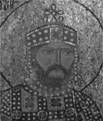 Figures
Figures
| The Tetrarchs |
| Arch of Galerius |
| Solidus of Constantine I |
| Column of Constantine, Constantinople |
| Isometric view, church of St. John Lateran, Rome |
| Sant Apollinare Nuovo, Ravenna |
| Fourth-century emperor, probably Constantius II |
| Missorium of Theodosios I |
| Coin of Theodosios II |
| Northeast gate, Byzantine fortress at Isthmia |
| Coin of Anastasios I |
| Funeral stele of an abbot |
| Qalat Seman |
| The Empress Theodora, San Vitale, Ravenna |
| Hagia Sophia, plan |
| Hagia Sophia, interior |
| Aristocratic woman, probably Anicia Juliana |
| Anicia Juliana, from the Vienna Dioscorides |
| Mosaic pavement with a representation of Apolausis |
| Byzantine fortress on the island of Dokos |
| Qasr Amra |
| Gold coin of Justinian II, first reign |
| Gold coin of Justinian II, second reign |
| Icon: Virgin and Child with two saints |
| Iconoclasts at work |
| Gold coin of Constantine V and Leo IV |
| Church of the Virgin at Skripou |
| Inscription of Leo the Protospatharios, Skripou |
| Plan of the monastery of Osios Meletios |
| Gold coin of Leo VI |
| The Mandylion |
| Ivory of Constantine VII |
| The katholikon of Megiste Lavra, Mount Athos |
| Mosaic of Constantine IX and Zoe, Hagia Sophia |
| Plan of the church of the Holy Apostles in Athens |
| Church of the Holy Apostles in Athens |
| Several cross-in-square churches |
| Coin of Romanos IV |
| Graffito of a ship from Korinth |
| Mosaic of John II Komnenos and his wife Eirene, Hagia Sophia |
| Plan of medieval Korinth |
| Plan of the Bema Church in Korinth |
| Little Metropolitan, Athens |
| A glazed bowl |
| Incised bowl |
| Cistercian monastery of Zaraka |
| Gracanica |
| St. Merkourios |
| Presentation of the Virgin |
| Meteora, the skete of Doupiani |
| Meteora, church of the Metamorphosis (Transfiguration) in the Great Meteoron |
| Meteora, the monastery of Rousanou |
| St. Anastasia the Poison-Curer (Pharmakolytria) |
| Mystras |
| Agioi Theodoroi, Mystras |
| Preparation of the Throne |
| Sultan Mehmed II |
| Siege of Constantinople |
| Panagia Lactans |
| Last Judgement, from Vatopedi monastery, Mount Athos |
| Detail from the Last Judgement, church of Voreonet |
| Assumption Cathedral in Zagorsk, Russia |
| Modern Byzantine fresco |
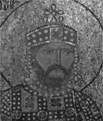 Maps
Maps
| Geography of the eastern Mediterranean |






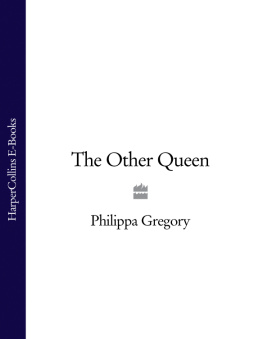

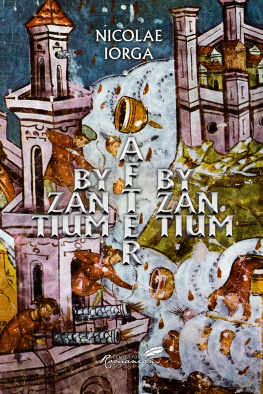


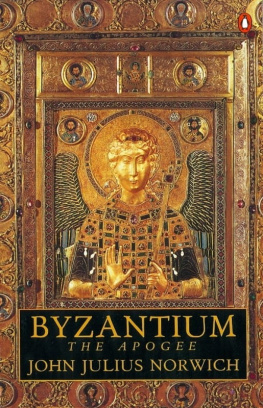


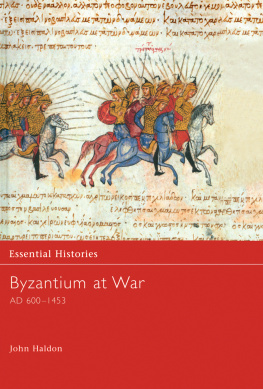
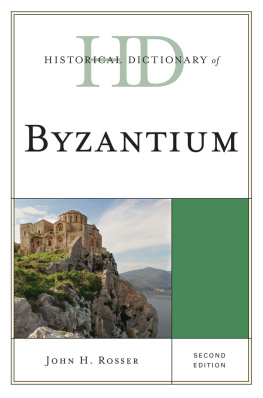



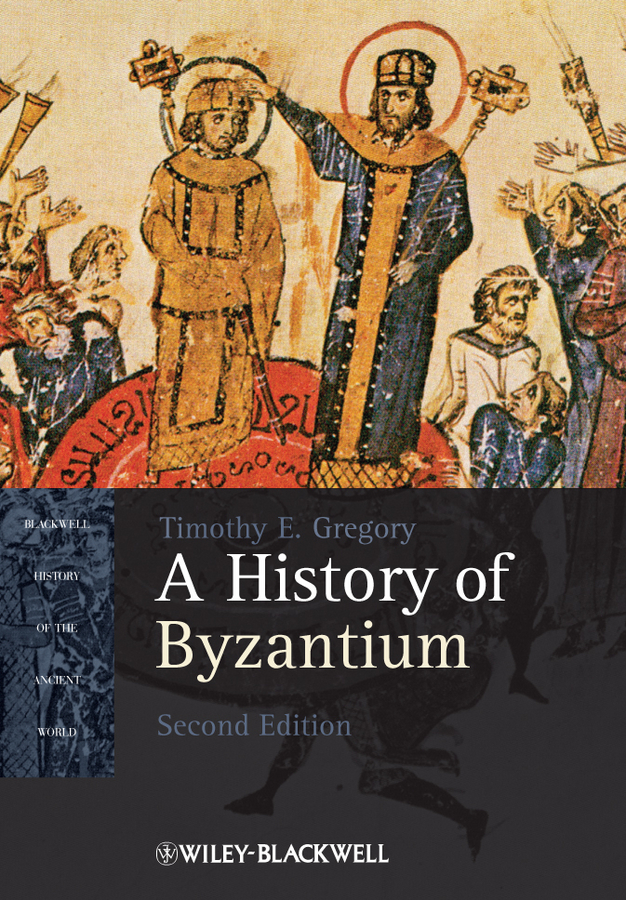

 Figures
Figures Maps
Maps